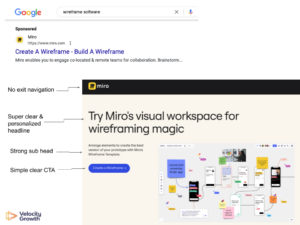How to copy Netflix’s retention tactics
As I sat down to write this, I googled how much Netflix is worth: approximately $300 billion – which is more zeroes than my head can handle!
Netflix also has roughly 209 million paid users on the platform (myself included). While these numbers are incredible, what’s more interesting is the fact that most of these users stick around for a very, very long time. Month after month through excellent retention, Netflix has become the giant that is. What separates companies like Netflix from the rest of the many players in the digital entertainment space who don’t get to their level of scale?
Churn! Or, lack of churn to be exact.
Netflix’s churn rate (cancellation rate) according to a Hubspot article is an incredibly low 2.4%.
And according to reports, they have the industry’s highest re-subscribe rate where even churned users come back over some period of time. So, while retention is their bread and butter, it should be yours too – retention is critical for the success (or failure) of your startup.
Why? Because keeping a user is so much cheaper and more efficient than getting a new one. And that revenue that comes with strong retention continues to compound month over month, year over year.
In this post, we’ll outline a couple of the ways Netflix thinks about and increases retention that you can also think about and replicate ⬇️.
Before we dive in, if you’re interested in a true deep dive on retention – check out my full-length “Mastering Growth” program for an hour-long session on retention and some additional resources and case studies along with the training.
Let’s dig in! There are 3 primary ways to increase retention that I’m going to focus on for this post:
1. Determine your proxy metric
Netflix’s core retention is based on monthly subscribers. When I think about retention, I think about it in terms of core & proxy metrics. Core metrics are those that you believe are most fundamental to the business. However, core metrics are lagging metrics, meaning you measure them at the end of some interval that’s usually at a minimum one month, though often many months or years in length. In the world of startups and company building we simply don’t have months or years to figure everything out. As such, looking directly at the core retention metric is not our best indicator of how to plan for improvements in retention.
Instead, what you’ll want to discover is the proxy metric. The proxy metric is a product metric usually action based that is the indicator of whether someone stays involved and engaged with your product. All of our products have at least one of these metrics.
For Netflix, they are a streaming service. So their value proposition is streaming content. And if someone streams content a lot, they likely will continue to want Netflix and continue streaming content.
So, when we think about Netflix, their proxy metric is content consumption, and their goal is to get you to watch at least 19 hours of content per month, give or take. If their audience is consuming 19 hours of content a month, they’ll stick around. If not, they are at risk of going away.
So while you need to understand your core metrics, these proxy metrics become super critical for retention. How does one do this effectively?
You’ll want to look at your audience in cohorts and indicate what is the consumption/engagement point where the likelihood of users staying as customers is much greater than that of them leaving. This will develop and become clear as your audience grows, and can change with natural growth changes in your business (think pricing, feature set, etc), so you don’t need your proxy as an exact science straight away. But you want to get started thinking about it.
When looking at your business, look at the value you provide. For Growth University, if someone engages with our content a handful of times within a month, we feel confident they won’t churn. Looking at the users who have left and seeing their behavior vs the ones that stick around should help make this super clear. And in our case, it does.
Once you have your proxy metric – you’ll want to start to try pushing people towards it. That’s where the next step comes in.
2. Reduce all barriers to experiencing your value
So if Netflix needs people to watch 19 hours of content – what have they done to try to get people watching?
Look at this quick video ⬇️
You can see that as I hover over a TV show it starts playing. Why? Because they want to get me watching as quickly as possible and attract my attention!
Ever noticed how the image for certain shows looks different on different people’s Netflix? They have designed an algorithm around that.
Through user research, they discovered that the image is 82% of someone’s focus when browsing their content, but people spend less than 2 seconds looking at it.
They now have a really interesting set of insights (which you can read here) about emotions on faces having an impact, the regional differences in design, and so on. It all ties into one of the core barriers to watching Netflix shows – making the decision to watch something.
They don’t stop there. They also send marketing messaging whenever a show you’ve seen has a new season kicking off, or suggestions on what you’ve watched to stay top of mind.
And the strength of their content strategy – which includes its releasing of viewership statistics (Heard of Squid Game?) – has been an incredibly effective viral marketing strategy so if you watch shows, you constantly hear about Netflix.
So look at your business and once someone has paid ask yourself: what is the biggest barrier to experiencing value? Is it the time it takes to get to value (think training programs in the case of Growth University) or the knowledge needed to partake in collaboration with your team (SaaS tools for example)? Also, you can ask your customers if they aren’t hitting that proxy metric why they aren’t using the product as much as you’d like – and start working on that.
3. Create value that continues to compound
It is widely known that Netflix spends a lot of money on new shows. In fact, in 2021, that number was 17 billion USD.
And in some ways, they have to create this much content to stay relevant. How many streaming services have you started and then stopped? I’ve used pretty much every one. And the one constant that I have yet to turn off is Netflix. Why? The value in Netflix is not just streaming shows but being constantly able to watch new shows. Every time you go to Netflix there are likely new suggestions of what to watch so you don’t get bored. In fact, I could probably spend the next year not working, only watch Netflix, and still not get through all the programs that have been recommended to me. Wow! But let’s assume you did get through all the shows you’d like to watch – once you get bored or only see shows you’ve seen before, that 19 hours gets harder to reach – and the more people churn! The higher the chance of you churning is likely as well.
Now, it’s pretty unlikely you have 17 billion to spend this year on your product offering (if you do, get in touch!). But, you can look at your offering and see what that experience looks like. And you can likely find areas of improvement.
Cooking sites need new recipes, meditation apps need new tracks, no-code sites need features you can constantly add once you launch. At Growth University, we need to add new content and features to membership to keep our users engaged & involved. But don’t build for the sake of building.
Create content and features around what cohorts are consuming – if you have a cooking app and the vegan users get through every recipe in 2 weeks – build there. If you have a meditation app but no one is listening to the tracks – adding more tracks without user interest won’t help your metrics. Pin your product updates to your proxy metrics and your value creation and don’t be “busy” working on features without knowing the impact of what you are building.
So, those are 3 ways you can try to replicate some of Netflix’s success.
As mentioned above, we go a lot deeper into individual retention tactics on my program “Mastering Growth“, so check that out if you like this type of content.
Comment below with some of the best examples you’ve seen of retention out in the wild! We’re always looking for new ideas!

Craig Zingerline is a 6 time founder who has helped dozens of companies scale their growth. Prior to Velocity Growth, Craig was the Chief Product Officer @ Sandboxx, Head of Growth at Upside Travel, CEO of Votion, Head of Growth at Red Tricycle, and VP at New Signature. In addition to in-house roles, Craig has advised and consulted with dozens of high growth startups (4 exits). He’s an award winning product strategist who has mentored hundreds of founders on growth, marketing, and product management.






